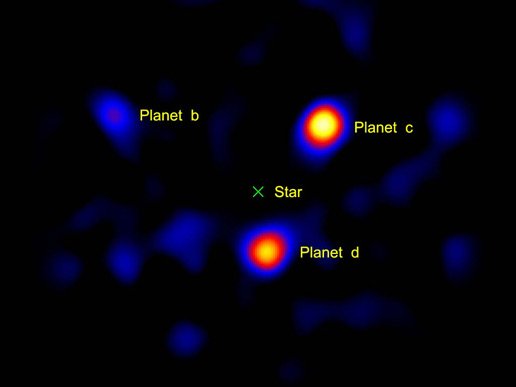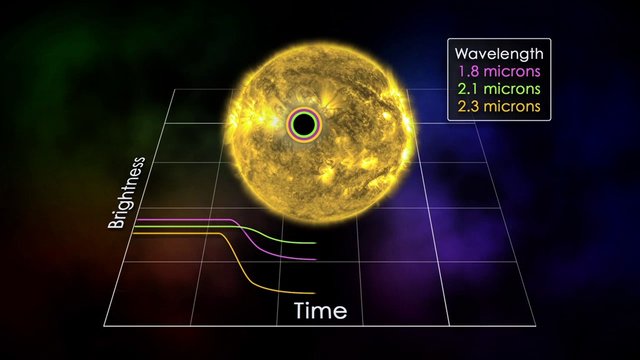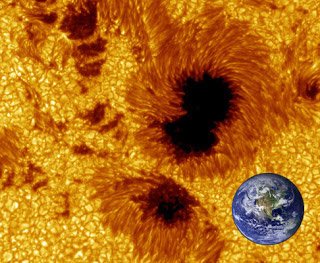What makes finding exoplanets so difficult?
Exoplanets, or planets orbiting stars other than our sun, captured public imagination well before the discovery of 51 Peg b. With current technologies, we've been able to spot thousands of exoplanets around many, many stars. The majority of these are large planets with highly periodic orbits--meaning they orbit their host stars much faster than the Earth.
These types of planets are fantastic for multiple planet-finding methods; the low-hanging fruit of the field. What about planets like Earth, or just planets that aren't incredibly close to their stars? For that, we need to do quite a bit more work.
Direct Imaging
The most obvious way to find a variety of exoplanets and understand them reasonably well is taking a picture of them. Direct imaging, typically with the help of some apparatus to block out the host star’s light, lets scientists peer into the light reflected off a planet. While objectively satisfying (who here doesn't want to literally see a completely alien world?), current direct imaging technology has a long way to go.
An image of the system HR8799. (Credit: NASA/JPL-Caltech/Palomar Observatory)
The most pressing issue with imaging a planet is the brightness of a star. There are several ways of blotting out the host star's light, but none have been deployed yet. Also, at such low resolutions some fundamental information about the planets such as their mass and orbits remain quite difficult to constrain without computational heavy lifting, telescope time, and developing new methods for constraining these crucial parameters.
Currently, there are several NASA and ESA (PDF) initiatives investigating the potential for future missions with direct imaging capabilities.
Planetary Transits
Some systems are quite unique, in that they happen to be oriented in such a way that as the planet orbits its star, it passes between the Earth's line of sight and the star. This causes a periodic dip in the star's brightness, which can be used to analyze quite a few things about the planet. For example, if the planet maintains an atmosphere the light passing through the atmosphere will reach us, allowing scientists to use a method known as transit spectroscopy (PDF).
An diagram showing how the apparent "size" of the planet changes at different wavelengths, or types of light. (Credit: NASA/GSFC)
The Kepler spacecraft used this type of observation to find many, many exoplanets over the course of its two missions. It accomplished this by focusing on one area of the sky for a long period of time and searching for stellar fluctuations. While not all of these were planets—some were star spots or other non-period activity—currently there are thousands of Kepler candidates alongside over 2,000 confirmed planets.
Transiting poses its own difficulties; mainly the host star's brightness. Missions like Kepler, where a long amount of time is spent collecting data on one or multiple systems, will generally have problems finding planets not close to their host star. It's not impossible to find these planets with transit spectroscopy, but as the distance from the star increases and the time spent collecting data decreases it becomes more and more a game of chance.
Furthermore, large and bright stars make finding small planets difficult. Trying to find Earth around our own Sun, for example, would be very difficult without many observations (PDF, academic article). This has to do with how overpowering the Sun's light is; Earth is smaller than some sunspots and only transits for a short period once an Earth year.
Earth, compared to a cluster of sunspots. (Credit:NASA)
Radial Velocity
Fundamental physics dictates that two objects interacting with one another with each be affected by said interaction; in other words, every action has an equal and opposite reaction. The same is true for planets and the stars they orbit. In fact, both the star and the planets of a given system orbit a point in space call a barycenter. This means that the star itself moves in space over time, and using that movement we can infer the presence of a planet and constrain its mass and orbital distance. This works best for low-mass stars and high-mass planets. For example, Jupiter causes the Sun to move at a speed of around 13 meters a second (or 29 miles per hour).
This motion is detected by observing how the host star's color changes over time thanks to the Doppler effect, or the change in a wave caused by the object producing it moving at any speed.
Of course, this method does not allow for analysis of the planet beyond its most basic characteristics. Almost nothing can be inferred about the atmosphere beyond whether it is likely a gas giant or a terrestrial planet.
How do we find more planets? How will we detect more Earth-sized objects?
As of right now, the majority of detected exoplanets are large, fluffy gas giants. As of today, January 14th, 2018, only 316 exoplanets have observed masses lower than Neptune's mass in the exoplanet.eu catalog.* With current technology, time, and patience we will almost certainly find more of them. However, as our technology improves and hi-tech telescopes like NASA's James Webb Space Telescope and the European "Extremely Large Telescope" begin their missions there is no telling what we may discover about our neighbor systems and beyond.
I only list a few of the possible tools we might use in the future to understand exoplanets as best as we can. In pursuing these endeavors we exponentially increase our understanding of not only our own planet, but the prevalence of life and our own place in the universe. There's no reason to speculate whether or not we will find life; regardless of if or when we do, the knowledge gained through the search for habitable and inhabitable exoplanets will have given us expansive knowledge of the universe on our local scale.
What do you think about the search for planets? What about the search for life?
I know that I mainly referenced NASA and ESA missions and initiatives in this article. Do you know about something your nation is doing to expand our knowledge of the cosmos? Please let me know in the comments!
* Note: this does not take into account uncertainties in the mass measurements, and also does not consider the "transition point" between a terrestrial and gaseous planet. This number is likely much smaller in reality.



Hi, I found some acronyms/abbreviations in this post. This is how they expand:
Congratulations @starsandspectra, you have decided to take the next big step with your first post! The Steem Network Team wishes you a great time among this awesome community.
The proven road to boost your personal success in this amazing Steem Network
Do you already know that awesome content will get great profits by following these simple steps, that have been worked out by experts?